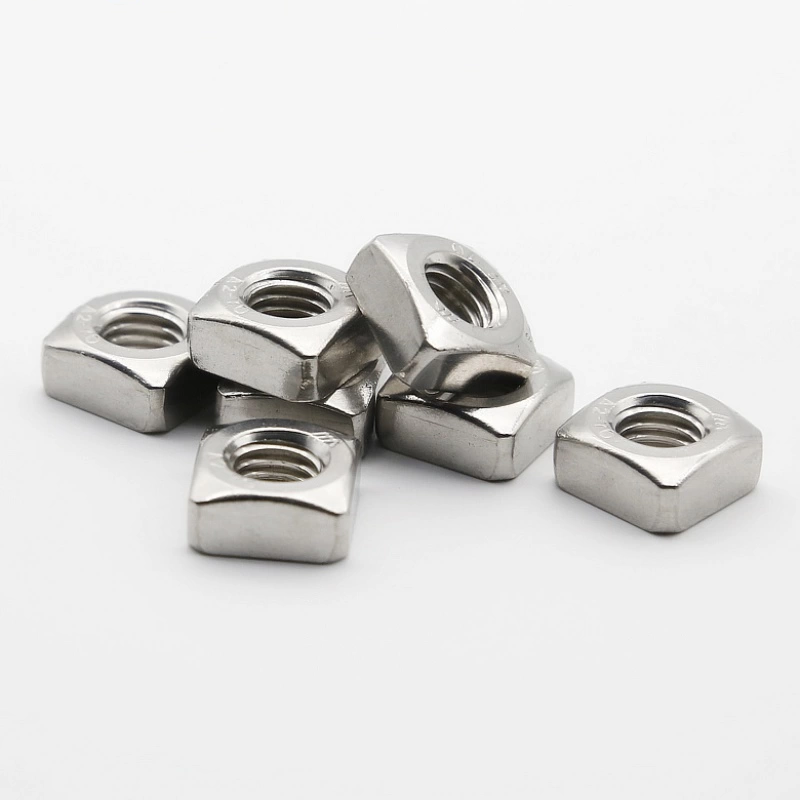

M8 Flange Lock Nut Specifications and Applications for Secure Fastening Solutions
Dec . 20, 2024 01:57 Back to list
M8 Flange Lock Nut Specifications and Applications for Secure Fastening Solutions
The M8 Flange Lock Nut An Essential Component for Secure Fastening
In the world of engineering and manufacturing, selecting the right fastening solutions is crucial for ensuring the structural integrity and reliability of assembled products. One important component that has gained popularity among engineers and technicians is the M8 flange lock nut. Renowned for its versatility and strength, the M8 flange lock nut plays a significant role in various applications, providing secure fastening solutions across industries.
Understanding M8 Flange Lock Nuts
The designation ‘M8’ refers to the metric size of the nut, denoting a nominal thread diameter of 8 millimeters. Flange nuts, as the name suggests, are distinguished by their built-in flange at the bottom. This flange acts as an integrated washer, distributing the load over a larger surface area, which helps to prevent damage to the surfaces being fastened. Additionally, this design feature can aid in achieving a more precise tightening and reduce the chances of the nut loosening over time.
Lock nuts, on the other hand, are engineered to resist loosening under vibration or torque. In the case of the M8 flange lock nut, it combines the benefits of a flange nut and a lock nut, providing superior resistance to loosening due to vibration. This property makes the M8 flange lock nut a reliable choice for applications where safety and reliability are paramount.
Applications of M8 Flange Lock Nuts
M8 flange lock nuts are widely used across various industries, including automotive, construction, aerospace, and electronics. Their applications range from securing engine components in vehicles to fastening structural elements in buildings and machinery. In the automotive sector, for instance, they are commonly used in suspension systems, engine mounts, and chassis assemblies, where vibrations and stresses are high.
m8 flange lock nut

In the construction industry, M8 flange lock nuts are utilized in assembling scaffolding, supporting structures, and securing heavy machinery. Their ability to maintain grip under dynamic loads makes them especially valuable. Similarly, in the aerospace industry, where safety is of utmost importance, these nuts help ensure that critical components remain securely fastened during operation.
Moreover, M8 flange lock nuts are also utilized in various consumer electronics, providing a reliable connection for circuit boards, casings, and other components that require secure fastening. Their resilience to vibration is particularly beneficial in high-frequency environments or where portability leads to repeated movement.
Advantages of M8 Flange Lock Nuts
One of the primary advantages of M8 flange lock nuts is their ease of use. The integrated flange provides a broader bearing surface, which reduces the risk of damage to the parts being secured, thus enhancing the lifespan of both the fastener and the assembled components. Additionally, the need for separate washers is eliminated, simplifying the assembly process and reducing the total number of components required.
Furthermore, M8 flange lock nuts are available in a variety of materials, such as steel, stainless steel, and nylon, allowing designers and engineers to select the most suitable option for their specific environmental conditions or application requirements. For example, stainless steel variants are favored for their corrosion resistance, making them ideal for outdoor applications or environments with high moisture exposure.
Conclusion
In conclusion, the M8 flange lock nut is an indispensable fastening component that combines functionality with versatility. Its design ensures stability and reliability, making it a preferred choice in a myriad of applications where secure fastening is critical. As industries continue to evolve and demand higher performance standards, the ongoing adoption of M8 flange lock nuts can be expected. Whether in automotive assemblies, structural constructions, or electronic applications, these nuts provide a dependable solution that engineers can trust. Thus, the M8 flange lock nut stands as a testament to the advancement in fastening technology and its vital role in maintaining safety and reliability across various sectors.
Latest news
-
High-Strength Hot Dip Galvanized Bolts - Hebei Longze | Corrosion Resistance, Customization
NewsJul.30,2025
-
Hot Dip Galvanized Bolts-Hebei Longze|Corrosion Resistance&High Strength
NewsJul.30,2025
-
High-Strength Hot-Dip Galvanized Bolts-Hebei Longze|Corrosion Resistance&High Strength
NewsJul.30,2025
-
Hot Dip Galvanized Bolts-Hebei Longze|Corrosion Resistance&High Strength
NewsJul.30,2025
-
Hot Dip Galvanized Bolts - Hebei Longze | Corrosion Resistance, High Strength
NewsJul.30,2025
-
High-Strength Hot Dip Galvanized Bolts-Hebei Longze|Corrosion Resistance, Grade 8.8
NewsJul.30,2025

